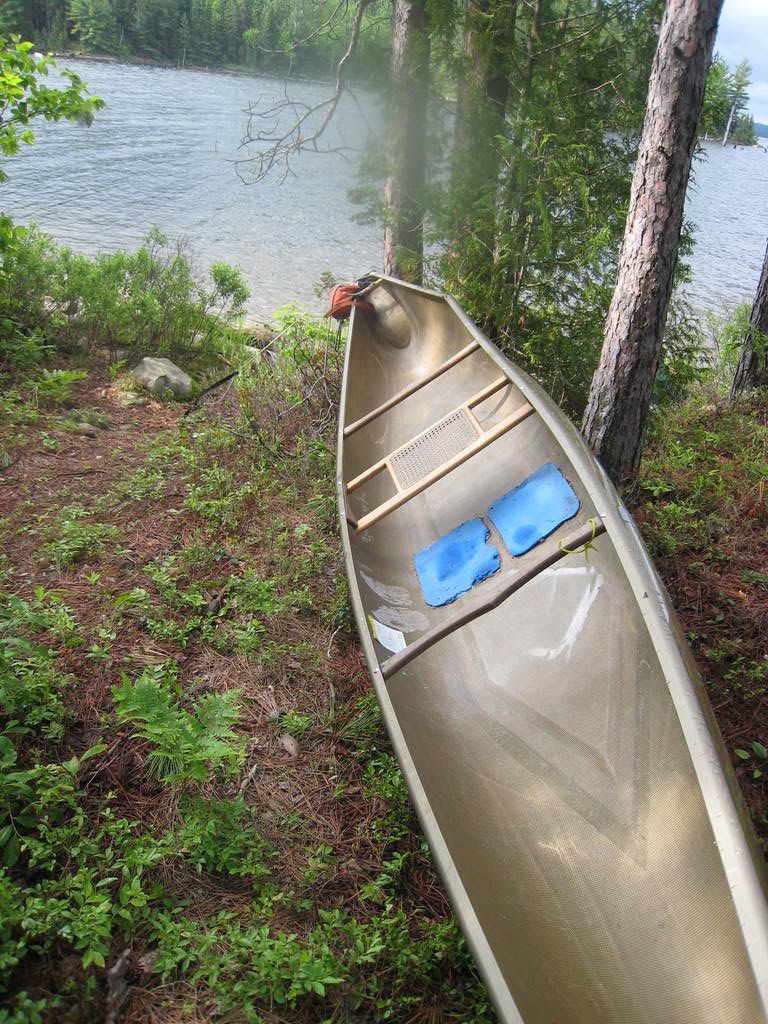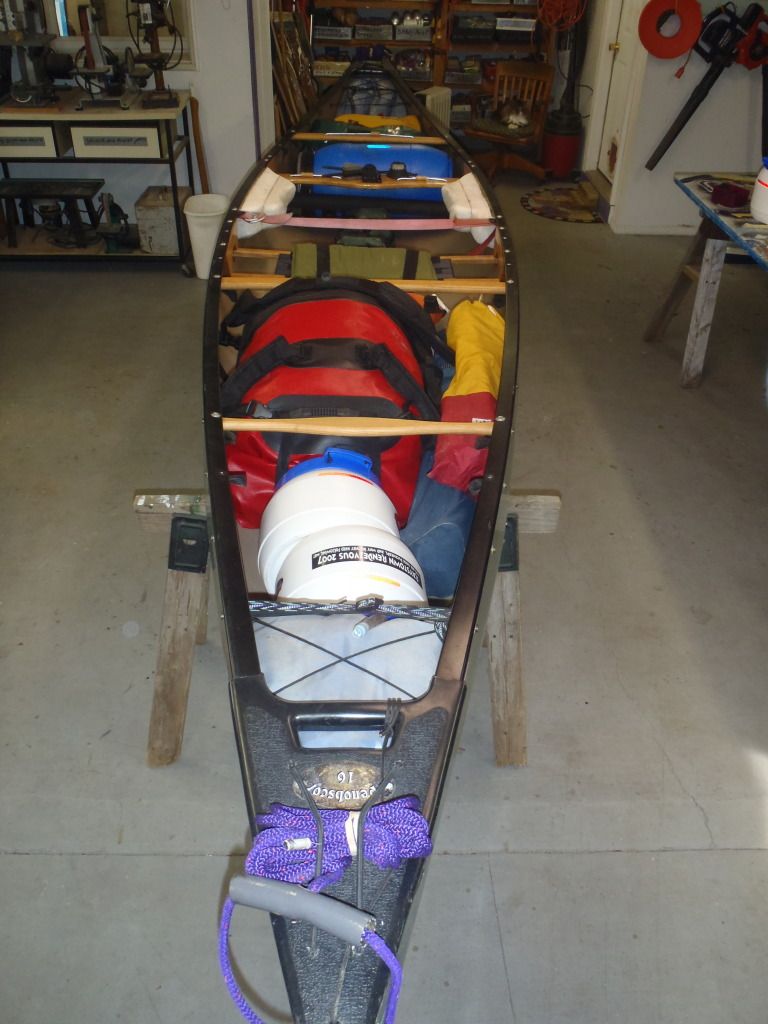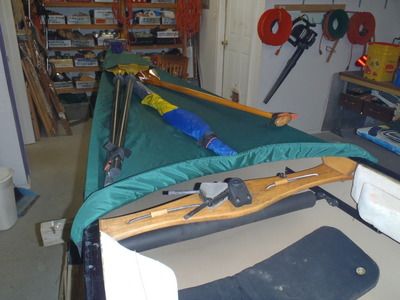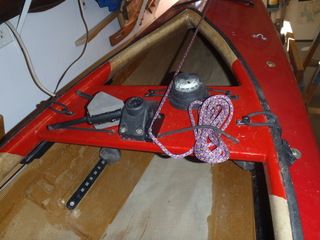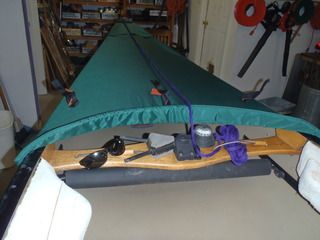This video illustrates a classic pin-then-wrap situation with unprepared and unpracticed canoeists. Some of their errors:
-- They decide to run rapids for which they probably didn't have requisite skills.
-- They run rapids with at least two giant sweeper logs across the entire river, which they should have been able to scout and see from the portage trail, which they had taken a few days prior.
-- They don't have painter lines on the ends of the canoe.
-- They don't have their packs tied in, so all the packs fall out on the pin and are difficult to locate and retrieve. They only get their food pack because the rapids shortly terminated in a lake. If the river had kept on going, their food pack would have been lost.
-- The canoe would not have wrapped as badly, or maybe not at all, had the big packs been tied in the middle where they could have deflected water away from scooping into the hull.
-- They don't seem to have basic canoe rescue skills to pull a pinned canoe off a rock while it is still fairly intact. So, in time, the canoe entirely wraps, crushes and is destroyed. Even without painters, the first thing the guy sitting on the river rock should have tried, if he had foot purchase, was to lift the canoe vertically from the submerged end. Next, try lifting vertically from the shore end. After that, some simple but prompt rope work such as a z-drag could have removed the canoe.
Keep in mind that this was not a particularly difficult pitch of rapids, nor wide, nor pushy water.
It's a valuable lesson video and I'm sure they all do have memories as the narrator says at the end.
-- They decide to run rapids for which they probably didn't have requisite skills.
-- They run rapids with at least two giant sweeper logs across the entire river, which they should have been able to scout and see from the portage trail, which they had taken a few days prior.
-- They don't have painter lines on the ends of the canoe.
-- They don't have their packs tied in, so all the packs fall out on the pin and are difficult to locate and retrieve. They only get their food pack because the rapids shortly terminated in a lake. If the river had kept on going, their food pack would have been lost.
-- The canoe would not have wrapped as badly, or maybe not at all, had the big packs been tied in the middle where they could have deflected water away from scooping into the hull.
-- They don't seem to have basic canoe rescue skills to pull a pinned canoe off a rock while it is still fairly intact. So, in time, the canoe entirely wraps, crushes and is destroyed. Even without painters, the first thing the guy sitting on the river rock should have tried, if he had foot purchase, was to lift the canoe vertically from the submerged end. Next, try lifting vertically from the shore end. After that, some simple but prompt rope work such as a z-drag could have removed the canoe.
Keep in mind that this was not a particularly difficult pitch of rapids, nor wide, nor pushy water.
It's a valuable lesson video and I'm sure they all do have memories as the narrator says at the end.


